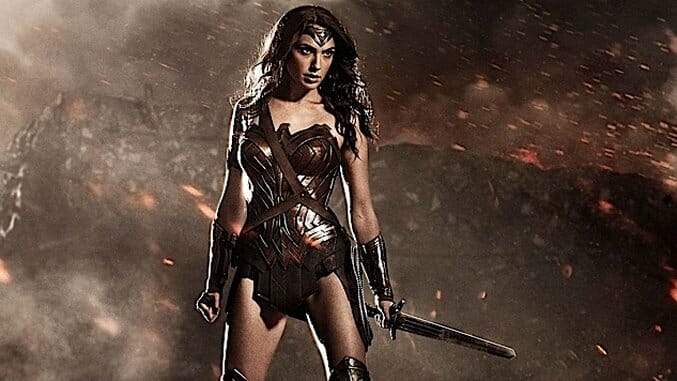Waiting for Wonder Woman
Why Batman v Superman’s biggest hit was also its biggest miss

If there is a bright spot in the great, misshapen mess of absentminded writing, generic spectacle, and spasmodic editing that is Batman v Superman: Dawn of Justice, it is Wonder Woman, a.k.a. one of the most iconic female superheroes in comics, a.k.a. Diana Prince, a.k.a. Israeli actress Gal Gadot. Granted, in a movie this bad (and dark), it’s not that hard to shine in comparison. Just consider that Ben Affleck, he of Gigli and Daredevil, Jersey Girl and Phantoms, emerges as a strong candidate for “best big screen Batman of all time” by the time the film’s credits roll.
All the same, the appearance of the costumed Wonder Woman in Batman v Superman: Dawn of Justice is an exciting moment, both for the movie and for superhero movies in general. By the time she shows up decked out in full Amazonian regalia, the film is well past the point of needing a revitalizing shot in its shriveled arm, and she delivers. Gadot’s Wonder Woman is fun. In contrast to her brooding and manly co-stars she’s positively energetic, dashing around the makeshift gladiatorial arena in which she does battle with Doomsday, her expression making it clear she’s thrilled to swing a sword into the face of something that deserves it.
The thrill doesn’t last—for her or the audience. Sure, on the surface, she’s a blast to watch, all fire and fury during the climactic bout with Doomsday, but considered in the context of the movie—and the DC universe as a whole—Wonder Woman’s role in Batman v Superman is a shallow, near insulting affair. She serves little purpose in the film beyond defending, supporting and occasionally intriguing its male characters. It’s a poor introduction for the character, whose influence and impact on comic book heroines is felt throughout the medium’s history, to say naught of her status as a feminist idol. (Back in 1972, Gloria Steinem used an image of the Amazing Amazon as the cover for Ms. magazine’s first issue.)
-

-

-

-

-

-

-

-

-

-

-

-

-

-

-

-

-

-

-

-

-

-

-

-

-

-

-

-

-

-

-

-

-

-

-

-

-

-

-

-








































